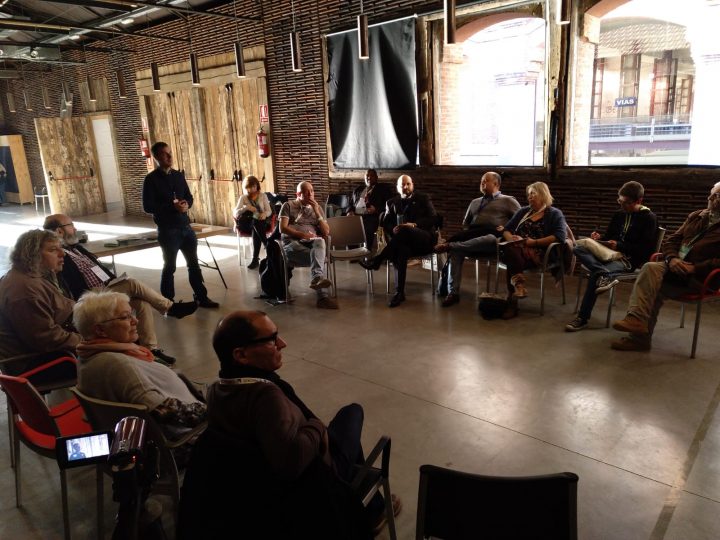This morning, our International Pressenza News Agency held a workshop, within the II Forum on Urban Violence and Education for Coexistence and Peace, on the role of journalism as an active subject in the construction of a culture of peace and nonviolence.
The workshop began with an exchange among the participants on what idea each had about the role of journalism and the journalist at this time and what they understood by violence. It was clear to everyone that there is no such thing as ‘objectivity’ in information and that the role of journalism in building a culture of peace is fundamental.
Tony Robinson, co-director of the Agency, explained the meaning and the birth of Pressenza: it was inspired by the New Humanism of the thinker Mario Rodríguez Cobos (Silo) to cover the First World March for Peace and Nonviolence, which toured the planet for a hundred days and ended in January 2010; it recalled its ten years of history, the publication in seven languages, the voluntary work of its professionals and economic independence.
Robinson continued telling what he learned in this decade and that he synthesized in 12 principles for communication from a perspective of peace and nonviolence, among which we can highlight: information as a social good, the unacceptability of violence, the need to make explicit the point of view of the reporter -since information is always subjective-, the influence of the journalist in the medium of the reporter and the influence of the medium on the reporter, intentionality and, therefore, the involvement of the journalist in a transformative attitude, encouraging dialogue and reconciliation, identifying structures of systemic oppression, or framing the information helping to elevate the point of view on one subject, among others.
He then presented some tools for such communication, related to the same selection of news, care in the language — that is positive, not degrading –, showing existing humanizing models, denaturalizing negative beliefs such as “the human being has a violent nature” or “that’s the way things are”, or highlighting the possibility of positive transformation of a situation in the future.
The workshop ended with a sharing of how an agenda could be set in motion that is based on the many and varied positive news that occurs all over the planet and that is buried under the – mostly violent and discouraging – headlines of the mainstream media. An agenda that reaches the populations so that people can have different points of view and know that there is another positive reality, which is hidden from us but which is gradually taking shape in the different continents. A reality that opens people’s future.
It was agreed that it could help to do this, encourage the growth of this type of journalism and the rapprochement between the media that bet on peace and nonviolence and social movements, usually invisible and silenced.
At the end of the workshop, an enabling outlook opened up among those present.
Translated from Spanish by Pressenza London










